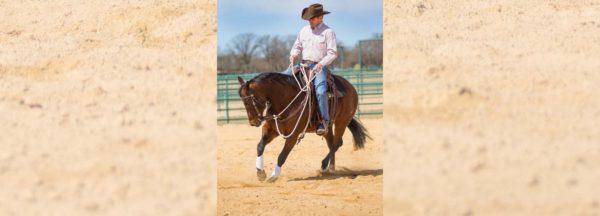Training Tip: Counterbend for a Softer, Suppler Horse

A step-by-step approach to training that focuses on suppleness as well as impulsion, addresses your horse’s fitness from head to tail. Whether you cut cows or trail ride, a well-balanced training program can improve your horse’s athleticism, achieve a deeper level of communication and responsiveness and enhance his overall well-being—a fit, flexible horse has greater endurance and resistance to injury.
Exercises that ask your horse to bend and move sideways, such as two-tracking, shoulder in/shoulder out and counterbending, improve your horse’s balance by increasing his ability to use his hind end. These lateral exercises, which include any of a series of exercises that move either your entire horse and/or an isolated section of his body to the left or the right of a path on which he’s traveling, are excellent for developing the muscles of the topline and hindquarters, which your horse needs for slow, collected gaits. When it comes to preparing your horse for collected canter transitions, spins and lead changes, these exercises are indispensable.
In this tip, I’m going to address counterbending, being able to tip the horse’s nose in one direction and pushing his shoulders around in a circle in the opposite direction at both the walk and trot. You should be able to move your horse’s shoulders by barely pressing with the calf of your leg and using only two fingers on the reins to direct his energy, having him stay light in your hands the entire time.
Counterbending, an advanced-level exercise in the Method, is very similar to the Intermediate exercise Shoulder In/Shoulder Out, only it’s more of an extreme movement because you’re pushing the horse’s shoulders beyond a 45-degree angle all the way into a circle. For example, if you’re counterbending the horse in a clockwise circle, his nose will be tipped to the left and his shoulders will be pushed to the right. It will teach him to pick up his shoulders and ribcage a lot more and get him lighter to the bridle and to your hands. It’s great preparation for rollbacks and spins because it teaches the horse how to move his shoulders off of light leg pressure. I love to do this exercise a little bit every day, especially at the trot, because it really softens and supples the horse’s entire body and improves his steering. The more you can control the horse’s shoulders, the better steering wheel you’ll have.
Get step-by-step instructions on how to teach your horse to counterbend in the Advanced Series. The training video as well as the lesson’s Arena Mate, can be found on the Downunder Horsemanship app under the premium content category.
